Components
-
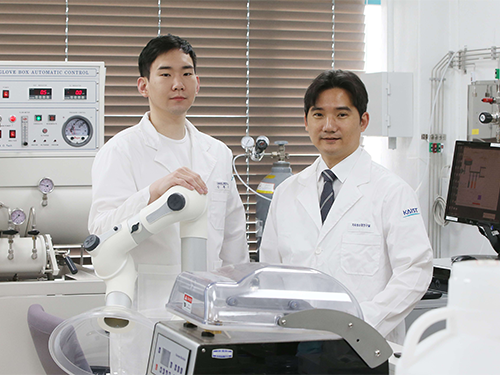 Visualization of Functional Components to Characterize Optimal Composite Electrodes
Researchers have developed a visualization method that will determine the distribution of components in battery electrodes using atomic force microscopy. The method provides insights into the optimal conditions of composite electrodes and takes us one step closer to being able to manufacture next-generation all-solid-state batteries.
Lithium-ion batteries are widely used in smart devices and vehicles. However, their flammability makes them a safety concern, arising from potential leakage of liquid electrolytes.
All-solid-state lithium ion batteries have emerged as an alternative because of their better safety and wider electrochemical stability. Despite their advantages, all-solid-state lithium ion batteries still have drawbacks such as limited ion conductivity, insufficient contact areas, and high interfacial resistance between the electrode and solid electrolyte.
To solve these issues, studies have been conducted on composite electrodes in which lithium ion conducting additives are dispersed as a medium to provide ion conductive paths at the interface and increase the overall ionic conductivity.
It is very important to identify the shape and distribution of the components used in active materials, ion conductors, binders, and conductive additives on a microscopic scale for significantly improving the battery operation performance.
The developed method is able to distinguish regions of each component based on detected signal sensitivity, by using various modes of atomic force microscopy on a multiscale basis, including electrochemical strain microscopy and lateral force microscopy.
For this research project, both conventional electrodes and composite electrodes were tested, and the results were compared. Individual regions were distinguished and nanoscale correlation between ion reactivity distribution and friction force distribution within a single region was determined to examine the effect of the distribution of binder on the electrochemical strain.
The research team explored the electrochemical strain microscopy amplitude/phase and lateral force microscopy friction force dependence on the AC drive voltage and the tip loading force, and used their sensitivities as markers for each component in the composite anode.
This method allows for direct multiscale observation of the composite electrode in ambient condition, distinguishing various components and measuring their properties simultaneously.
Lead author Dr. Hongjun Kim said, “It is easy to prepare the test sample for observation while providing much higher spatial resolution and intensity resolution for detected signals.” He added, “The method also has the advantage of providing 3D surface morphology information for the observed specimens.”
Professor Seungbum Hong from the Department of Material Sciences and Engineering said, “This analytical technique using atomic force microscopy will be useful for quantitatively understanding what role each component of a composite material plays in the final properties.”
“Our method not only will suggest the new direction for next-generation all-solid-state battery design on a multiscale basis but also lay the groundwork for innovation in the manufacturing process of other electrochemical materials.”
This study is published in ACS Applied Energy Materials and supported by the Big Science Research and Development Project under the Ministry of Science and ICT and the National Research Foundation of Korea, the Basic Research Project under the Wearable Platform Materials Technology Center, and KAIST Global Singularity Research Program for 2019 and 2020.
Publication:Kim, H, et al. (2020) ‘Visualization of Functional Components in a Lithium Silicon Titanium Phosphate-Natural Graphite Composite Anode’. ACS Applied Energy Materials, Volume 3, Issue 4, pp. 3253-3261. Available online at https://doi.org/10.1021/acsaem.9b02045
Profile:
Seungbum Hong
Professor
seungbum@kaist.ac.kr
http://mii.kaist.ac.kr/
Materials Imaging and Integration Laboratory
Department of Material Sciences and Engineering
KAIST
2020.05.22 View 11184
Visualization of Functional Components to Characterize Optimal Composite Electrodes
Researchers have developed a visualization method that will determine the distribution of components in battery electrodes using atomic force microscopy. The method provides insights into the optimal conditions of composite electrodes and takes us one step closer to being able to manufacture next-generation all-solid-state batteries.
Lithium-ion batteries are widely used in smart devices and vehicles. However, their flammability makes them a safety concern, arising from potential leakage of liquid electrolytes.
All-solid-state lithium ion batteries have emerged as an alternative because of their better safety and wider electrochemical stability. Despite their advantages, all-solid-state lithium ion batteries still have drawbacks such as limited ion conductivity, insufficient contact areas, and high interfacial resistance between the electrode and solid electrolyte.
To solve these issues, studies have been conducted on composite electrodes in which lithium ion conducting additives are dispersed as a medium to provide ion conductive paths at the interface and increase the overall ionic conductivity.
It is very important to identify the shape and distribution of the components used in active materials, ion conductors, binders, and conductive additives on a microscopic scale for significantly improving the battery operation performance.
The developed method is able to distinguish regions of each component based on detected signal sensitivity, by using various modes of atomic force microscopy on a multiscale basis, including electrochemical strain microscopy and lateral force microscopy.
For this research project, both conventional electrodes and composite electrodes were tested, and the results were compared. Individual regions were distinguished and nanoscale correlation between ion reactivity distribution and friction force distribution within a single region was determined to examine the effect of the distribution of binder on the electrochemical strain.
The research team explored the electrochemical strain microscopy amplitude/phase and lateral force microscopy friction force dependence on the AC drive voltage and the tip loading force, and used their sensitivities as markers for each component in the composite anode.
This method allows for direct multiscale observation of the composite electrode in ambient condition, distinguishing various components and measuring their properties simultaneously.
Lead author Dr. Hongjun Kim said, “It is easy to prepare the test sample for observation while providing much higher spatial resolution and intensity resolution for detected signals.” He added, “The method also has the advantage of providing 3D surface morphology information for the observed specimens.”
Professor Seungbum Hong from the Department of Material Sciences and Engineering said, “This analytical technique using atomic force microscopy will be useful for quantitatively understanding what role each component of a composite material plays in the final properties.”
“Our method not only will suggest the new direction for next-generation all-solid-state battery design on a multiscale basis but also lay the groundwork for innovation in the manufacturing process of other electrochemical materials.”
This study is published in ACS Applied Energy Materials and supported by the Big Science Research and Development Project under the Ministry of Science and ICT and the National Research Foundation of Korea, the Basic Research Project under the Wearable Platform Materials Technology Center, and KAIST Global Singularity Research Program for 2019 and 2020.
Publication:Kim, H, et al. (2020) ‘Visualization of Functional Components in a Lithium Silicon Titanium Phosphate-Natural Graphite Composite Anode’. ACS Applied Energy Materials, Volume 3, Issue 4, pp. 3253-3261. Available online at https://doi.org/10.1021/acsaem.9b02045
Profile:
Seungbum Hong
Professor
seungbum@kaist.ac.kr
http://mii.kaist.ac.kr/
Materials Imaging and Integration Laboratory
Department of Material Sciences and Engineering
KAIST
2020.05.22 View 11184 -
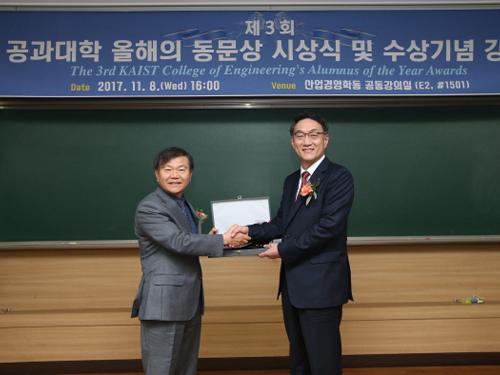 LG's Woo Jong Lee Named the Alumnus of College of Engineering
The College of Engineering at KAIST selected Woo Jong Lee, President and Head of the VC Business Division at LG Electronics Inc., as the 2017 Alumnus of the Year for the College of Engineering.
‘Alumnus of the Year’ is an award given to a distinguished alumnus who has contributed to the development of industrial technology or made outstanding academic achievements.
Lee graduated from KAIST with the master’s degrees in Industrial Engineering. He also worked at Daewoo Motors as an executive member in the development division. He has been a crucial human resource for LG since he joined the company in 2000.
While leading the VC business Division, which was established in 2013, Lee is recognized as a creative engineer as well as a leader in the automotive industry. Focusing on autonomous driving and eco-friendliness, he has been engaged in the production of major projects from the beginning to the end.
Since 2014, outstanding alumni whose achievements have represented KAIST at the highest level have received the award. The first recipient was Tae-Kyung Yoo, an executive at Lumens Co., Ltd., and the second recipient was Jung-Ju Kim, the founder of NXC. In 2016, the award was not given because an appropriate candidate could not be identified.
The award was held in the Industrial Engineering & Management Building (E2) on November 8. Faculty members including the dean of the College of Engineering Jong-Hwan Kim, the vice dean Hyochoong Bang, the head of Industrial & Systems Engineering Taesik Lee, and the dean of the KAIST Academy Tae-Eog Lee attended the ceremony.
After the ceremony, Lee delivered a lecture on ‘Auto-components Business of LG Electronics’ to KAIST students.
2017.11.09 View 9750
LG's Woo Jong Lee Named the Alumnus of College of Engineering
The College of Engineering at KAIST selected Woo Jong Lee, President and Head of the VC Business Division at LG Electronics Inc., as the 2017 Alumnus of the Year for the College of Engineering.
‘Alumnus of the Year’ is an award given to a distinguished alumnus who has contributed to the development of industrial technology or made outstanding academic achievements.
Lee graduated from KAIST with the master’s degrees in Industrial Engineering. He also worked at Daewoo Motors as an executive member in the development division. He has been a crucial human resource for LG since he joined the company in 2000.
While leading the VC business Division, which was established in 2013, Lee is recognized as a creative engineer as well as a leader in the automotive industry. Focusing on autonomous driving and eco-friendliness, he has been engaged in the production of major projects from the beginning to the end.
Since 2014, outstanding alumni whose achievements have represented KAIST at the highest level have received the award. The first recipient was Tae-Kyung Yoo, an executive at Lumens Co., Ltd., and the second recipient was Jung-Ju Kim, the founder of NXC. In 2016, the award was not given because an appropriate candidate could not be identified.
The award was held in the Industrial Engineering & Management Building (E2) on November 8. Faculty members including the dean of the College of Engineering Jong-Hwan Kim, the vice dean Hyochoong Bang, the head of Industrial & Systems Engineering Taesik Lee, and the dean of the KAIST Academy Tae-Eog Lee attended the ceremony.
After the ceremony, Lee delivered a lecture on ‘Auto-components Business of LG Electronics’ to KAIST students.
2017.11.09 View 9750 -
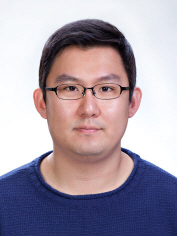 Tae-Wan Kim, a doctoral candidate, receives the best paper award from ECTC
The 2014 Electronic Components and Technology Conference (ECTC) will take place on May 27-30 in Florida, USA. Tae-Wan Kim, a Ph.D. candidate at the Department of Materials Science Engineering (MSE), KAIST, will receive the Intel Best Student Paper Award at the conference.ECTC is the premier international conference that brings together the best researchers and engineers in packaging, components and microelectronic systems science, technology and education in an environment of cooperation and technical exchange. The conference is sponsored by the Components, Packaging and Manufacturing Technology (CPMT) Society of IEEE (Institute of Electrical and Electronics Engineering).The paper describes research on novel nanofiber anisotropic conductive films for ultra fine pitch electronic package application, which was written under the guidance of Professor Kyung-Wook Paik of the MSE Department. In the past ten years, two of his students have received the best paper award from ECTC.
2014.03.14 View 13218
Tae-Wan Kim, a doctoral candidate, receives the best paper award from ECTC
The 2014 Electronic Components and Technology Conference (ECTC) will take place on May 27-30 in Florida, USA. Tae-Wan Kim, a Ph.D. candidate at the Department of Materials Science Engineering (MSE), KAIST, will receive the Intel Best Student Paper Award at the conference.ECTC is the premier international conference that brings together the best researchers and engineers in packaging, components and microelectronic systems science, technology and education in an environment of cooperation and technical exchange. The conference is sponsored by the Components, Packaging and Manufacturing Technology (CPMT) Society of IEEE (Institute of Electrical and Electronics Engineering).The paper describes research on novel nanofiber anisotropic conductive films for ultra fine pitch electronic package application, which was written under the guidance of Professor Kyung-Wook Paik of the MSE Department. In the past ten years, two of his students have received the best paper award from ECTC.
2014.03.14 View 13218 -
 A Step Closer to Ultra Slim Mobile Phone
Professor Baek Kyung Wook (department of Material Science and Engineering) succeeded in developing an ultra-thin conjugation technique that can perfectly replace the modular contact in electronic devices.
The research team developed a compound material using ultra-fine solder-adhesive film and developed the vertical ultrasonic conjugation process thereby making a reliable utra-thin conjugation.
The developed technique allowed for very thin and reliable conjugation and will be able to replace the socket type connector and is expected to revolutionize the electronic device industry.
In mobile electronic devices like the smartphone, the trend is to incorporate various functional modules like camera, display, touchscreens, etc. in addition to striving for miniaturization of the device.
Recently the problem was the fact that the number of modules within the device was increasing due to the incorporation of various functions, and consequently the volume that these modules took up increased as well, which made miniaturization almost impossible.
Professor Baek‘s team succeeded in improving upon this problem by creating a compound material that has ultra-fine solder particles that can melt to form alloy fusion with the electrode and thermosetting adhesive film that can wrap around the electrode and provide mechanical protection.
The use of this material made it possible to reduce the thickness of the connector by hundredth fold which improved electrical, mechanical properties and highly reliable.
From a processing standpoint the conventional conjugation process involved heating the mechanical block and was therefore hard to manage its production and also consumed 1000W and took up to 15 seconds.
By contrast, Professor Baek’s team’s new process uses only ultrasound to locally heat and melt the conjugation point itself thereby reducing power consumption to 100W and conjugation time to 1~5 seconds.
The technique developed by Professor Baek and Lee Ki Won Doctorate student was awarded Excellent Dissertation Award by world famous journals like the Electronic Components and Technology Conference and is being recognized worldwide.
2012.01.31 View 11086
A Step Closer to Ultra Slim Mobile Phone
Professor Baek Kyung Wook (department of Material Science and Engineering) succeeded in developing an ultra-thin conjugation technique that can perfectly replace the modular contact in electronic devices.
The research team developed a compound material using ultra-fine solder-adhesive film and developed the vertical ultrasonic conjugation process thereby making a reliable utra-thin conjugation.
The developed technique allowed for very thin and reliable conjugation and will be able to replace the socket type connector and is expected to revolutionize the electronic device industry.
In mobile electronic devices like the smartphone, the trend is to incorporate various functional modules like camera, display, touchscreens, etc. in addition to striving for miniaturization of the device.
Recently the problem was the fact that the number of modules within the device was increasing due to the incorporation of various functions, and consequently the volume that these modules took up increased as well, which made miniaturization almost impossible.
Professor Baek‘s team succeeded in improving upon this problem by creating a compound material that has ultra-fine solder particles that can melt to form alloy fusion with the electrode and thermosetting adhesive film that can wrap around the electrode and provide mechanical protection.
The use of this material made it possible to reduce the thickness of the connector by hundredth fold which improved electrical, mechanical properties and highly reliable.
From a processing standpoint the conventional conjugation process involved heating the mechanical block and was therefore hard to manage its production and also consumed 1000W and took up to 15 seconds.
By contrast, Professor Baek’s team’s new process uses only ultrasound to locally heat and melt the conjugation point itself thereby reducing power consumption to 100W and conjugation time to 1~5 seconds.
The technique developed by Professor Baek and Lee Ki Won Doctorate student was awarded Excellent Dissertation Award by world famous journals like the Electronic Components and Technology Conference and is being recognized worldwide.
2012.01.31 View 11086 -
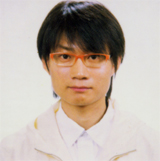 Ki-Won Lee Receives Best Student Paper Award
Ki-Won Lee Receives Best Student Paper Award
Ki-Won Lee, a doctoral student of Materials Science & Engineering, has received the Best Student Paper Award ‘Motorola Fellowship Award’ at 2007 Electronic Components and Technology Conference (ECTC).
Lee’s paper is about a new bonding process of anisotropic conductive film using ultrasonic wave, which applies ultrasonic wave, instead of thermal compression, at the room temperature to reduce the process time from ten to three seconds.
The recipients of Motorola Fellowship Award are selected by IEEE Components, Packaging and Manufacturing Technology Society, and Motorola awards special scholarship to recipients. The ECTC is the world’s largest yearly conference concerning electronic packaging technologies with more than 1,000 attendees and more than 300 presented papers.
2007.07.02 View 19754
Ki-Won Lee Receives Best Student Paper Award
Ki-Won Lee Receives Best Student Paper Award
Ki-Won Lee, a doctoral student of Materials Science & Engineering, has received the Best Student Paper Award ‘Motorola Fellowship Award’ at 2007 Electronic Components and Technology Conference (ECTC).
Lee’s paper is about a new bonding process of anisotropic conductive film using ultrasonic wave, which applies ultrasonic wave, instead of thermal compression, at the room temperature to reduce the process time from ten to three seconds.
The recipients of Motorola Fellowship Award are selected by IEEE Components, Packaging and Manufacturing Technology Society, and Motorola awards special scholarship to recipients. The ECTC is the world’s largest yearly conference concerning electronic packaging technologies with more than 1,000 attendees and more than 300 presented papers.
2007.07.02 View 19754 -
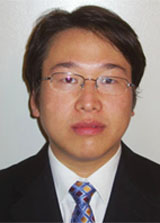 KAIST Graduate Selected As Winner of IEEE Outstanding Young Engineer Award
- First Korean winner of IEEE Outstanding Young Engineer Award
Dr. Myung-Jin Rhim, Bachelor, Master, and Ph.D of KAIST, has been selected to receive 2007 Outstanding Young Engineer Award by the Institute of Electrical and Electronics Engineers (IEEE) Components, Packaging, and Manufacturing Technology (CPMT) Society. Dr. Rhim will be the first Korean winner of the award.
Dr. Rhim received his Ph.D of Materials Science & Engineering at KAIST in 2001 and has made outstanding research outputs, such as 28 papers at international journals covered by Science Citation Index (SCI) and 12 international patents. He has been also listed in Marquis Who’s Who in the World, Who’s Who of Emerging Leaders, Who’s Who in Asia, and Outstanding Intellectual of the 21st Century, 21st Century Award for Achievement published by the International Biographical Centre of Cambridge, England.
IEEE CPMT Society has yearly awarded the Outstanding Young Engineer Award to a scientist or engineer of electronic components, packaging, and manufacturing technology prior to his or her 35th birthday in recognition of his or her research achievements. Dr. Rhim is now in his postdoctoral program at Georgia Institute of Technology in USA.
2007.06.14 View 18737
KAIST Graduate Selected As Winner of IEEE Outstanding Young Engineer Award
- First Korean winner of IEEE Outstanding Young Engineer Award
Dr. Myung-Jin Rhim, Bachelor, Master, and Ph.D of KAIST, has been selected to receive 2007 Outstanding Young Engineer Award by the Institute of Electrical and Electronics Engineers (IEEE) Components, Packaging, and Manufacturing Technology (CPMT) Society. Dr. Rhim will be the first Korean winner of the award.
Dr. Rhim received his Ph.D of Materials Science & Engineering at KAIST in 2001 and has made outstanding research outputs, such as 28 papers at international journals covered by Science Citation Index (SCI) and 12 international patents. He has been also listed in Marquis Who’s Who in the World, Who’s Who of Emerging Leaders, Who’s Who in Asia, and Outstanding Intellectual of the 21st Century, 21st Century Award for Achievement published by the International Biographical Centre of Cambridge, England.
IEEE CPMT Society has yearly awarded the Outstanding Young Engineer Award to a scientist or engineer of electronic components, packaging, and manufacturing technology prior to his or her 35th birthday in recognition of his or her research achievements. Dr. Rhim is now in his postdoctoral program at Georgia Institute of Technology in USA.
2007.06.14 View 18737